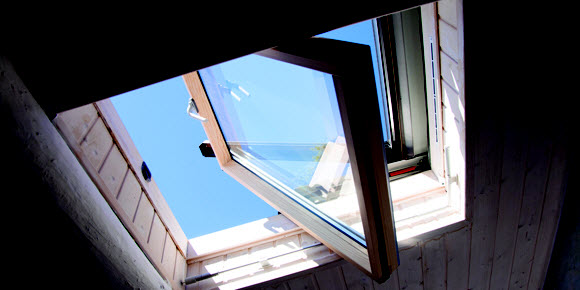by Arrol Gellner
After 30 years in architecture, I still hear the same tired old wives’ tales circulated about remodelling. It’s amazing how long it can take to stamp out a wrong-headed concept. Here are some of my least favourite:
1. Bathrooms should be planned back-to-back to save cost. Rubbish. This chestnut goes way back, and probably stems from the practice of placing apartment house bathrooms back-to-back. You’re not building apartments, however, so the meager savings in plumbing cost — something on the order of a few hundred dollars — doesn’t justify straitjacketing your floor plan with a bathroom arrangement you don’t like.
2. The best way to improve your home’s energy efficiency is by installing new double-glazed windows. Poppycock. In most houses, windows represent a very small fraction of the total heat loss. By far, the most heat is lost through ceilings, so attic insulation is the best place to put your energy-efficiency dollars. Once that’s done, consider installing a higher-efficiency furnace and ductwork. Replacing your windows is far down the list of cost-effective energy improvements.
3. Granite is the best choice for kitchen counters. Balderdash. Granite is definitely durable, but it may not make economic sense to install a 100-year countertop on cabinets that will last only 30 years. In any case, there are lots of other interesting countertop materials out there, from other types of stone slabs, to butcher block, tile, and yes, even plastic laminate. It’s worth taking a look at them before you choose granite by reflex.
4. Skylights are the best way to get daylight into your house. Malarkey. Skylights are a good last resort to improve daylighting, but adding windows should always be your first choice. Why? Because they’re passive solar devices naturally attuned to the seasons, letting in more low-angle sunlight in winter when you want it, and excluding it in summer when you don’t. Skylights do just the reverse. They also look out of place on many styles of homes, particularly those built before the Second World War.
5. Point-of-use (“tankless”) water heaters are the most efficient way to heat water. Maybe, maybe not. Tankless units can be just the thing for certain applications, such as bathrooms that are remote from the water heater. But their efficiency is typically oversold, with efficiency ratings based on rarified laboratory conditions that are seldom reflected in actual installations. They’re also complex and subject to erratic response under low-flow conditions.
What’s more, if saving space isn’t your primary concern, there are a number of conventional storage water heaters available with efficiencies in the mid-90s, some at surprisingly reasonable cost.
6. Recessed “can” lights are the best way to modernize a home’s lighting. Piffle. Recessed lighting is useful for very specific purposes — highlighting permanent objects or architectural features, for example — but they do a lousy job of general illumination. This is because cans are inherently directional, creating a pool of light beneath them, rather than diffusing light throughout the room. They’re also terribly overused, leading to the notorious “swiss cheese ceiling” effect seen in so many remodelled houses. Be sparing in your use of recessed cans. And if you have a house predating the Second World War, think twice about using them at all. They’re literally a glaring anachronism in most older homes.
— Inman News.



